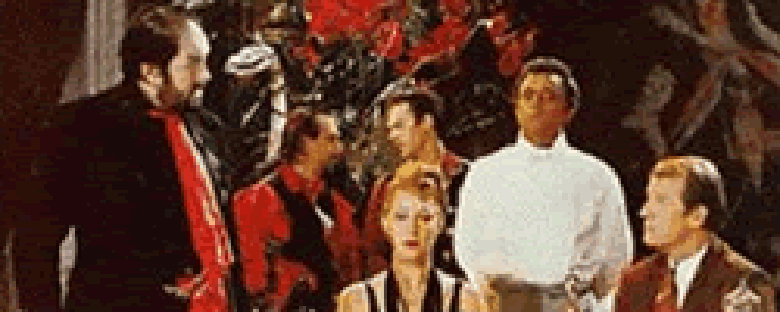Reviews
Peter Greenaway recognizes a connection between sex and eating in his seldom subtle The Cook, The Thief, His Wife and Her Lover. At 124 minutes, two thirds of the film occurs at luxurious restaurant, Le Hollendais, and a substantial portion of remaining screen time is allotted to the sexual exploits of the wife and lover of the film’s title.
The film covers the characters in the title: the passive, witness-to-all cook; the domineering and outwardly violent thief; the curious wife and her bookworm lover. It is futile to charm the film with any setting, time, or place. It is a stand-alone work warranting no comparison. The Cook, The Thief, His Wife and Her Lover, Greenaway’s most cultivated effort, is a vision of such affronting power that when paired with an NC-17 rating becomes a work prone to debate. This claim is further evidenced by the film’s blatant and all-but-decipherable allegory.
The vision of Peter Greenaway is by default one of the most distinguished in contemporary film. This is simply because he abandons filmic convention. Actions are not expectedly enhanced by close-ups and the detached feel adds to the film’s voyeuristic nature, as some level of focus is placed on the film’s periphery. In one scene Spica — the Thief — demands that a table be moved so dancers may perform in the restaurant. The patrons refuse, and he dumps a bowl creamy soup on one of them. To his right (an action lost in full-frame), on of Spica’s yes-men walks up to a woman at the same table, tosses her head back and forcibly kisses her.
The thief’s nihilistic behavior is best illustrated in a scene late in the film. He is approached by one of his many molls and she claims his wife is having an affair behind his back. He renounces her claim in frustration, shoves a fork in her face, and resumes his meal. This action occurs in a crowded restaurant.
The term “moving picture” has never been as appropriate as it is in reference to this film. Greenaway uses tracking shots with noticeable frequency. As his characters enter and exit the restaurant, the camera slides to the right (or left) with deliberate pace, as eyes would pan across a wide expanse of land. To punctuate this otherwise simple cinematographic technique, characters’ wardrobes are affected by moving from room to room; their clothes are accented by greens in the kitchen, reds in the dining room, and so forth. These changes occur magically and without notice. This detail, though subtle, underlines Greenaway’s uncompromising attention to detail. Also worthy of note is the bathroom (I am inclined to call it the lavatory because of the film’s extravagant decadence), which is displayed in blinding white. This color lends some idea of purity to the room, and it is ironic being that it houses the first erotic meeting between the wife and lover.
Despite the obvious weight given to the characters, the primary component of The Cook is Sacha Vierny’s cinematography. His work is the kind of no-basis-needed accomplishment that earns its author permanent acclaim. Vierny’s colors bleed off the screen, and his lighting, though used in a film known for its shocking nature, is, I shudder to say, beautiful.
Similarly eliciting praise is Michael Nyman’s pulsing score, which resonates with frequent, strong chords and blends seamlessly with the recurrent images of violence. In short, the entire design of this film — from costume accessories (the servers have pockets sewn especially for silverware) to casting — is a notable accolade. On a side note, the costume and production designers went on to collaborate on Jeunet and Caro’s The City of Lost Children, also renowned for its visuals.
Michael Gambon as Spica contains the majority of the film’s dialogue. Not a single thing he says is of any importance, really; his dialogue is entirely superfluous. The wife is played with quiet brilliance by Helen Mirren. This role would be a challenge to even the most seasoned sexpot, and Mirren (at forty no less) seizes the role with frightening determination.
In discussion of this film critics have often focused on the relationship between the wife and lover. Though this pairing is the obvious crux of the film, few have acknowledged that the two share not a single verbal exchange during their first few escapades. In this manner Greenaway has trimmed the affair of any extraneous formalities. The emphasis is solely on sex, and in this case its patrons seem so starved for it that it seems there is no time to speak anyway.
The meaning of Greenaway’s work persists to be elusive. Some have contested that the film represents Thatcherian England, and that each character is analogous to a particular group: primarily, the thief is symbolic of Thatcher’s rule, and the cook represents political opposition. This claim is admissible, though interpretation is unnecessary in understanding or appreciating the film.
We don’t do comments anymore, but you may contact us here or find us on Twitter or Facebook.



